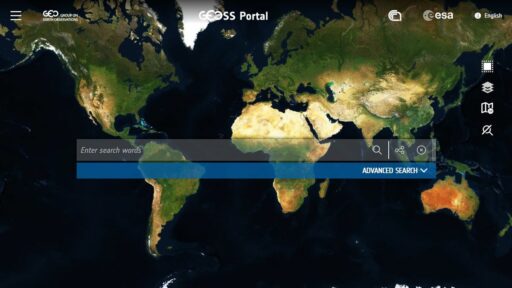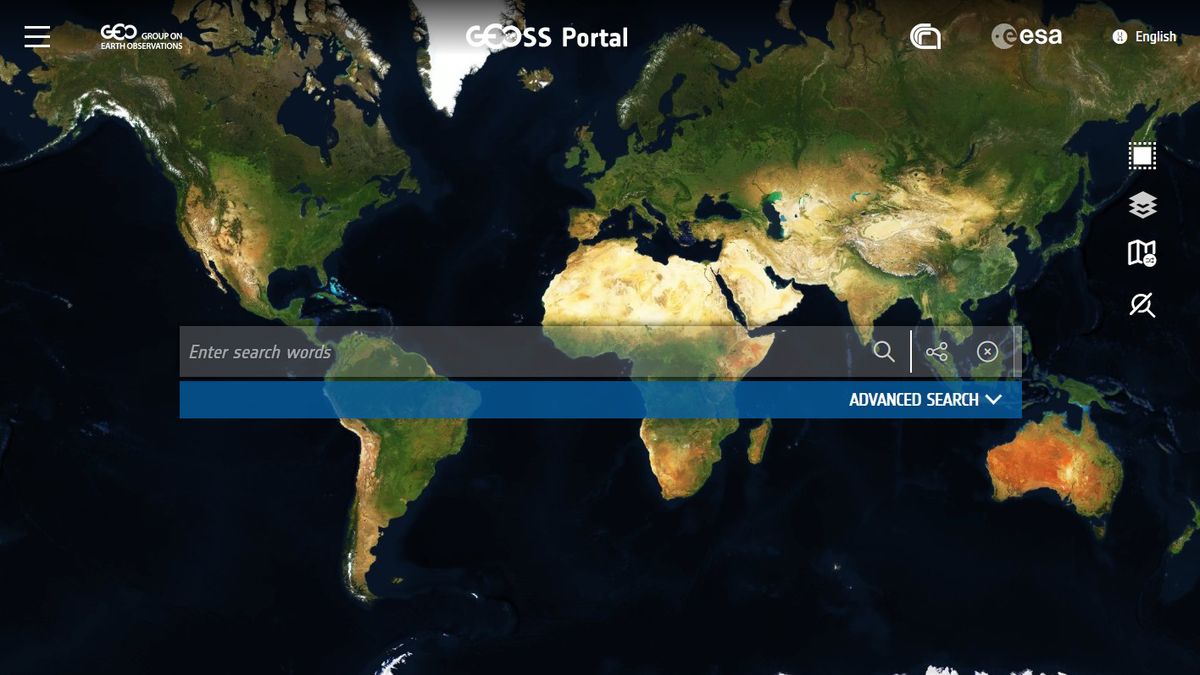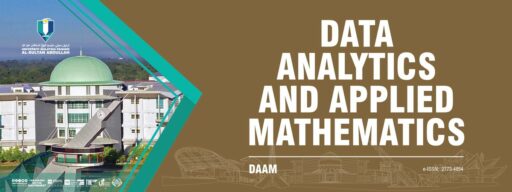Table of Contents
In the realm of data analysis, visualization is a cornerstone for uncovering insights, storytelling, and driving informed decisions. The article ‘Unlocking Insights: Top Data Visualization Examples to Inspire Your Next Project’ delves into the transformative power of visual data representation. It illustrates how interactive dashboards, heat maps, and other visual tools can reveal hidden patterns, narrate complex data narratives, and enhance decision-making processes. Let’s explore the compelling examples and best practices that can inspire your next data visualization endeavor.
Key Takeaways
- Interactive dashboards and heat maps are pivotal in discovering demographic correlations and consumer behavior, enabling dynamic data exploration and uncovering hidden insights.
- Data visualization serves as a potent storytelling tool, capable of narrating complex narratives and evoking emotions, as seen in the visual representation of the pandemic’s impact.
- Our brains are predisposed to process visual information effectively, making data visualization crucial for enhancing comprehension and guiding strategic decisions.
- Real-life applications, such as interactive maps in real estate, demonstrate how visualization tools empower individuals and businesses to make better, more informed choices.
- Adopting best practices in data visualization, including designing impactful dashboards and employing strategic visualization techniques, is essential for effective communication.
Exploration and Discovery Through Visualization

Interactive Dashboards: Encouraging Dynamic Data Exploration
In the realm of data analysis, interactive dashboards have revolutionized the way we approach decision-making. These dynamic interfaces amalgamate various data visualizations into a single, cohesive platform, enabling users to engage with the data on a deeper level. By incorporating filters, drill-down capabilities, and hover-over tooltips, dashboards transform static reports into living documents that respond to the user’s curiosities and analytical queries.
Dashboards are not just about displaying data; they are about unlocking the stories within the numbers, allowing for a more intuitive and exploratory experience.
The power of interactive dashboards lies in their ability to facilitate real-time data exploration. Users can customize their view, drill down into granular details, and manipulate the data to reveal trends and patterns that might otherwise remain obscured. For instance, consider the following table showcasing a simplified version of a dashboard’s filtering capabilities:
| Filter Type | Description |
|---|---|
| Time Period | Allows users to select a specific time frame for data analysis. |
| Geographic Region | Enables exploration of data by location, such as country or city. |
| Product Category | Filters data to show results for a particular type of product. |
This level of interactivity not only enhances user engagement but also empowers decision-makers to extract actionable insights on demand. As the digital landscape evolves, the significance of interactive dashboards in driving business intelligence and data-driven strategies continues to grow.
Heat Maps: Unveiling Demographic Correlations and Consumer Behavior
Heat maps serve as a powerful tool in the realm of data visualization, particularly when it comes to understanding demographic correlations and consumer behavior. By representing data in varying shades or colors, they provide immediate visual cues that can highlight trends and outliers within a dataset.
For instance, geospatial heat maps overlay segmentation data on maps, revealing regional variations that are crucial for businesses. A fast-food chain might analyze a choropleth map to determine customer density across cities, using this insight to strategize on new outlet locations or to identify untapped markets.
Heat maps are not just about presenting data; they are about uncovering the story the data tells.
Another application is in optimizing online marketing efforts. A heat map illustrating website traffic across different time zones can guide marketing teams to place ads strategically for maximum impact. Similarly, a logistics company might use a heat map to visualize delivery routes and demand hotspots, thereby optimizing delivery schedules and adjusting for weather conditions.
The versatility of heat maps extends to tracking user engagement. For example, a heatmap can show the intensity of interest or engagement of each prospect based on their actions, such as visits, clicks, downloads, or purchases. This level of insight is invaluable for tailoring marketing strategies and improving customer experiences.
The Role of Visualization in Identifying Market Trends and Opportunities
Data visualization serves as a compass in the vast sea of market data, guiding businesses to uncover hidden trends and capitalize on emerging opportunities. By transforming complex datasets into intuitive graphics, companies can swiftly identify patterns that might otherwise go unnoticed.
For instance, consider the following table summarizing a market analysis:
| Year | Product A Sales | Product B Sales | Market Growth |
|---|---|---|---|
| 2019 | $1.2M | $0.8M | 5% |
| 2020 | $1.5M | $1.1M | 7% |
| 2021 | $1.8M | $1.4M | 10% |
This succinct representation not only shows the sales trajectory but also correlates it with overall market growth, enabling strategic decision-making.
Visualization is not just about seeing data; it’s about understanding and acting upon it.
By employing various visualization tools, businesses can analyze and prioritize prospects based on multiple criteria, such as potential value and profitability. A bubble chart, for example, can effectively compare the size, growth, and profitability of each prospect segment, providing a clear visual hierarchy of where to focus efforts.
The Art of Storytelling with Data

Narrating Complex Data Narratives with Visual Aids
The essence of data visualization lies in its ability to transform complex data into compelling stories. For instance, consider the intricate tale of market fluctuations. A simple line chart can bring to life the ebb and flow of stock prices, making the abstract concrete and understandable.
- Insight: Data as narrative
- Example: Line chart of market trends
By distilling vast amounts of data into digestible visuals, we empower our audience to grasp sophisticated concepts swiftly.
Moreover, visual aids serve as a bridge between raw data and strategic insights. A telecom provider, for example, might use an animated line chart to depict customer lifetime value (CLV) trends. This not only illustrates the data but also highlights the effectiveness of marketing campaigns over time. Such visual storytelling is invaluable in conveying nuanced messages that might otherwise be lost in translation.
Heat Maps and Pandemic Impact: A Case Study
The COVID-19 pandemic has underscored the importance of data visualization in understanding complex health crises. Heat maps have been pivotal in revealing the spread and intensity of the virus across different regions. They provided a clear visual representation of hotspots, enabling governments and health organizations to allocate resources more effectively.
During the pandemic, heat maps were used to display various data points:
- Infection rates by geographic area
- Hospitalization numbers
- Vaccination levels
These visual tools not only conveyed the severity of the situation but also helped in tracking the effectiveness of interventions over time.
The use of heat maps extended beyond health data, incorporating economic and mobility information to paint a comprehensive picture of the pandemic’s impact. This case study exemplifies how visualizations can transform raw data into actionable insights, guiding critical decisions during unprecedented times.
Using Visualizations to Evoke Emotions and Drive Engagement
Data visualization transcends mere presentation of facts; it is an art form that can stir emotions and foster a deeper connection with the audience. By combining data with engaging visuals, we create narratives that resonate and leave a lasting impression. For instance, the strategic use of color can convey a mood or highlight critical data points, influencing how the message is perceived and remembered.
- Insight: Beautifully designed visualizations capture attention and engage audiences.
- Example: Infographics that blend data with compelling visuals create memorable experiences.
Data visualization is not just about the data; it’s about the story it tells and the way it makes us feel.
Interactive elements in visualizations invite the audience to become part of the story. By enabling users to explore data dynamically, we not only enhance their understanding but also empower them to make informed decisions. This participatory aspect of visualization is crucial in transforming passive viewers into active participants.
Perception, Cognition, and Data Visualization

The Brain’s Affinity for Visual Information Processing
Our brains are naturally inclined to process visual elements with remarkable speed and efficiency. Visualizations capitalize on this propensity, transforming complex datasets into comprehensible and memorable visuals. This cognitive efficiency is not just about speed; it’s about the clarity and depth of understanding that visuals can convey. For instance, a line chart depicting sales over time can instantly highlight trends and anomalies that might take much longer to discern from spreadsheets.
Visual data representations enhance our ability to quickly grasp patterns, outliers, and relationships that might be obscured in raw data.
Understanding the cognitive and perceptual biases is crucial as they can influence our interpretation of visual data. Awareness of potential biases, such as framing effects or preconceived notions, is essential for accurate data analysis. Additionally, the context in which data is presented significantly affects our perception and decisions.
Here are several key points to consider about the brain’s affinity for visual information:
- We are inherently visual beings, processing visuals more efficiently than text or numbers.
- Visualizations leverage our natural ability to recognize and interpret visual patterns.
- Cognitive biases and context play a significant role in how we perceive and interpret visual data.
Bar Charts and Sales Data: A Visual Guide to Strategic Decisions
Bar charts serve as a fundamental tool in the realm of data visualization, particularly when it comes to sales data. They offer a straightforward method for comparing quantities across different categories, making them indispensable for strategic decision-making. By visualizing sales data in bar charts, patterns and trends become immediately evident, allowing businesses to quickly adjust strategies and optimize performance.
Bar charts not only simplify the presentation of sales figures but also enhance the ability to spot outliers and anomalies that could indicate areas of concern or opportunity.
For instance, consider a bar chart displaying monthly sales across different product lines. Such a visualization can swiftly reveal which products are top performers and which may require additional marketing efforts or a strategic pivot. Here’s a simplified example of how this data might be presented:
| Month | Product A | Product B | Product C |
|---|---|---|---|
| Jan | $20,000 | $15,000 | $25,000 |
| Feb | $22,000 | $18,000 | $20,000 |
| Mar | $25,000 | $20,000 | $30,000 |
In summary, bar charts are more than just visual aids; they are a lens through which businesses can view and interpret the complex landscape of sales data, leading to more informed and effective decision-making.
Enhancing Data Comprehension with Effective Visualization Techniques
The power of data visualization lies in its ability to transform complex datasets into clear and actionable insights. By presenting information visually, comprehension is significantly enhanced, allowing for a more intuitive understanding of the underlying data. For instance, a line chart can succinctly illustrate trends over time, turning a table of numbers into a story about progress or decline.
Effective visualization techniques go beyond mere aesthetics; they serve as a bridge between data complexity and human cognition. Consider the following points:
- Visualizations simplify the overwhelming task of analyzing large datasets.
- They enable stakeholders to quickly identify patterns, trends, and outliers.
- A compelling chart can communicate a message more effectively than a dense report.
By leveraging visual tools, we can unlock valuable insights and communicate information in a way that resonates with our innate visual processing capabilities.
As we delve into the world of data visualization, it’s crucial to recognize its role not just in enhancing understanding, but also in facilitating decision-making and increasing data literacy across various fields.
Data Visualization for Informed Decision-Making

Interactive Maps for Real Estate: Empowering Homebuyers
Interactive maps have revolutionized the way homebuyers approach the real estate market. By providing a dynamic platform for exploration and decision-making, these tools allow individuals to filter and search for properties based on their unique preferences and needs.
-
Interactivity and Exploration:
- Users can dynamically explore data with filters, tooltips, and drill-down options.
- Example: Homebuyers can filter properties by location, price range, and amenities on a real estate agent’s interactive map.
-
Color Psychology:
- Colors in maps evoke emotions and guide perception. Green signifies growth, red for caution, and blue for trust.
The integration of geospatial visualizations with market data empowers homebuyers to identify prime locations and make informed decisions with a level of detail and insight previously unavailable.
The use of interactive maps in real estate not only enhances the home buying experience but also supports better market analysis. By overlaying segmentation data such as demographics, price trends, and community amenities, potential buyers can visualize the landscape of opportunities and challenges within different neighborhoods.
Leveraging Visualization Tools for Better Business Outcomes
In the realm of business, data visualization is not just a tool; it’s a game-changer. It transforms raw data into a visual context, making complex information more accessible and understandable. For instance, consider the impact of visualization tools like Microsoft Power BI, Tableau, and Qlik Sense, which have been recognized for their excellence in business intelligence and interactive chart capabilities.
By turning data into visual stories, businesses can highlight trends, patterns, and outliers that might otherwise go unnoticed. This approach not only simplifies the data analysis process but also accelerates the decision-making cycle.
A practical example of data visualization’s impact can be seen in a manufacturing case study. The company utilized visual tools to optimize their workflows, resulting in improved operational efficiency and a stronger competitive edge. The table below illustrates the before and after metrics of their key performance indicators (KPIs):
| KPI | Before Visualization | After Visualization |
|---|---|---|
| Production Time | 10 hours | 8 hours |
| Defect Rate | 5% | 3% |
| Customer Satisfaction | 80% | 90% |
These results underscore the importance of integrating data visualization into business strategies. It’s not just about presenting data; it’s about unlocking actionable insights that drive business growth and success.
Case Studies: How Visual Data Influences Executive Choices
In the realm of executive decision-making, visual data is not just a convenience—it’s a game-changer. The ability to quickly assimilate and interpret complex information can pivot a company’s strategy from good to great. For instance, consider the impact of a well-crafted line graph that illustrates a company’s revenue trends over time, highlighting seasonal peaks and troughs that inform future budget allocations.
Visual data serves as a beacon, guiding executives through the fog of data overload to actionable insights.
The persuasive power of visual data is evident when it comes to stakeholder engagement. A compelling visualization can crystallize the value proposition of a project, making the difference between securing funding or not. Here’s how visual data can influence executive choices:
- Contextual Clarity: Simplifying complex data into a visual format provides immediate context and facilitates strategic thinking.
- Risk Assessment: Visualizations can expose potential risks and rewards, allowing for a more nuanced approach to decision-making.
- Efficiency: Time is a precious commodity. Data visualizations enable quicker comprehension, which translates to faster decision-making.
In summary, the strategic use of visual data can lead to more informed and confident executive decisions, ultimately driving business success.
Best Practices in Data Visualization

Designing Impactful Dashboards for Startups
In the fast-paced startup environment, dynamic dashboards are essential tools that provide real-time insights and drive strategic decisions. Unlike static reports, these dashboards offer a level of interactivity that can significantly enhance the decision-making process.
- Filters allow users to narrow down data.
- Drill-downs enable a deeper dive into specific metrics.
- Hover-over tooltips offer quick explanations and additional context.
For instance, a health tech startup might use a dashboard to display patient outcomes through a heatmap. This approach not only simplifies the data but also effectively directs attention to critical areas for resource allocation. Similarly, an insurance company could employ a dashboard to analyze claim data, using filters to pinpoint issues within specific segments such as auto, health, or home insurance.
Data visualization is not just an aesthetic choice; it’s a strategic imperative for startups. By converting raw data into a visual format, startups can uncover patterns and insights that might otherwise remain hidden. This process turns data into a canvas that invites exploration and innovation.
Barchart Case Studies: Lessons from Real-Life Visualization Successes
Barchart’s data visualization capabilities have transformed the way organizations interpret complex data, turning it into actionable insights. By enhancing data comprehension and decision-making, Barchart has empowered businesses across various industries.
In these case studies, we observe the tangible benefits that Barchart’s visual tools provide. From streamlining manufacturing processes to optimizing financial strategies, the impact is clear and measurable.
The following table summarizes key outcomes from a selection of Barchart case studies:
| Industry | Challenge | Barchart Solution | Outcome |
|---|---|---|---|
| Finance | Data overload | Interactive barcharts | Improved investment decisions |
| Healthcare | Patient data analysis | Custom dashboards | Enhanced patient care |
| Manufacturing | Process inefficiency | Real-time data tracking | Increased production efficiency |
These examples underscore the strategic advantage of visual data analysis. As we continue to explore the power of data visualization, it’s evident that Barchart’s tools are not just about presenting data; they’re about unlocking insights that drive success.
Data Visualization Strategies for Effective Communication
Effective communication through data visualization hinges on the clarity and accessibility of the visual representation. Visual elements must be chosen with the audience in mind, ensuring that the message is not only conveyed but also retained. For instance, a well-crafted pie chart can highlight market share distribution at a glance, fostering immediate understanding among stakeholders.
To achieve this, certain strategies can be pivotal:
- Utilize consistent and intuitive color schemes.
- Simplify by removing unnecessary clutter.
- Employ annotations for clarity and emphasis.
- Prioritize data integrity to maintain trust.
By adhering to these strategies, data visualization becomes a bridge between complex datasets and actionable insights, enabling stakeholders to engage with the data meaningfully.
It’s also essential to tailor visualizations to the context of the presentation. A sales report for executives might benefit from a table summarizing key performance indicators:
| Quarter | Revenue | Expenses | Profit |
|---|---|---|---|
| Q1 | $120K | $30K | $90K |
| Q2 | $150K | $45K | $105K |
| Q3 | $130K | $40K | $90K |
| Q4 | $170K | $50K | $120K |
This table not only presents the data succinctly but also allows for quick comparisons and trend identification, which are crucial for informed decision-making.
Conclusion
Throughout this article, we have explored a variety of compelling data visualization examples that demonstrate the power of turning complex data into clear, impactful visuals. From uncovering hidden insights to enhancing storytelling, and from facilitating exploration and discovery to aiding in decision-making, these examples serve as inspiration for your next project. Data visualization is not just about presenting data; it’s about communicating information in a way that is both intuitive and engaging. As we continue to delve into the world of data, let these examples remind us of the importance of aesthetics, context, and the ability to transform numbers into narratives. Whether you’re a seasoned data analyst or a curious newcomer, the potential to inform, influence, and inspire with data visualization is immense. Keep these examples in mind as you harness the power of visualization to bring your data to life.
Frequently Asked Questions
How does data visualization facilitate exploration and discovery?
Data visualization encourages users to engage with data through interactive dashboards, allowing them to drill down, filter, and dynamically explore information. For example, heat maps can reveal demographic correlations or consumer behaviors that are not immediately apparent in raw data.
Can data visualization uncover hidden insights?
Yes, data visualization can reveal hidden insights by representing data in a visual context. This enables the identification of outliers, anomalies, or patterns that suggest trends or issues, such as a heat map highlighting crime rates to pinpoint high crime areas.
What role does data visualization play in storytelling?
Data visualization is a powerful storytelling tool. It can narrate complex data narratives succinctly, evoke emotions, and engage audiences. For instance, a heat map showing the impact of a pandemic can tell a compelling story about its spread and effects.
How does data visualization aid in decision-making?
Data visualization aids decision-making by providing interactive tools, like maps for real estate, that empower users to make informed choices. By adjusting filters and exploring data, users can gain deeper insights into areas such as home prices and neighborhood amenities.
What are some best practices in data visualization?
Best practices in data visualization include designing impactful dashboards for easy data comprehension, using bar charts to illustrate clear trends in sales data, and employing strategies that effectively communicate complex information through visual aids.
Why is data visualization crucial for businesses?
Data visualization is crucial for businesses because it simplifies data analysis, aids in strategic decision-making, and communicates insights effectively. It helps in comparing data, exploring trends, and influencing stakeholders through visual narratives.





